Charger Energizer Maxi Compact Charger
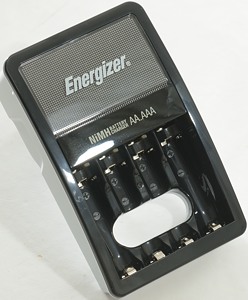

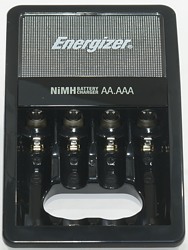
Energizer has a line of chargers, this is a low end one.
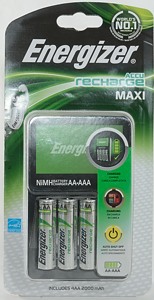
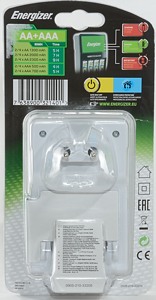
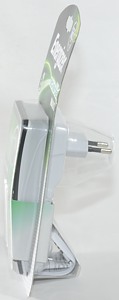
I got the charger in a blister pack. The charge time specified on the pack can only be used with a stop watch, the charger will not signal done after that time.
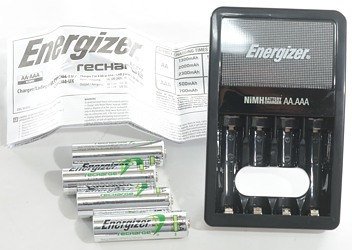
The contents of the pack: The charger, 4 2000mAh energizer cells and an instruction sheet in many languages.
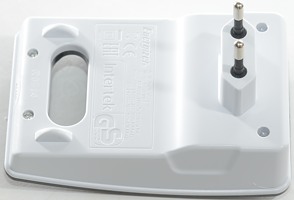
The charger has a hole below the batteries, this makes it easier to push them out.
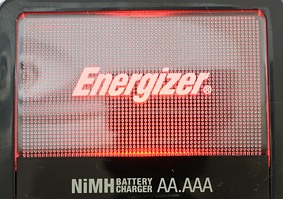
A large part of the front is used as a charging/done signal lamp. When charging it is red and will change to green when done.

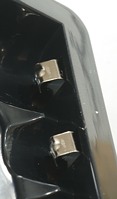
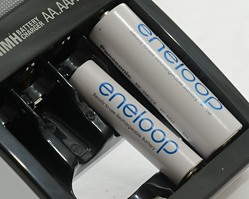
The charger has the typically two level slots used for AA and AAA batteries. It can charge either two or four batteries at a time.


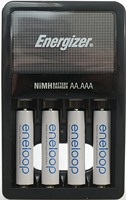
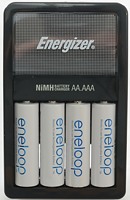
Measurements charger
- Charges two cells in series.
- First channel is slot #1 & #2
- Second channel is slot #3 & #4
- Termination is on time (10-11 hours).
- Indication is a large surface with red/green led behind.
- Mains standby power is 0.12 watt
%201+2.png)
The charger is using a low charge current and it depends to some degree on the battery voltage.
The batteries are charged after about 7 hours, but the charger continues until it has reached 10 hours.
%203+4.png)
The second bank does the same, this time the total time is 11 hours.
%201+2.png)
The high capacity cells do also get 11 hours.
%201+2.png)
With AAA cells it is faster, but they do still get a lot of charge after they are full.
.png)
This charge curve is a bit mysterious, it looks like the charge current on the 2 bank is stopped after 9½ hour (Temp sensor is on second bank), but the first channel continues for 11 hours (I did it twice and both looks the same).
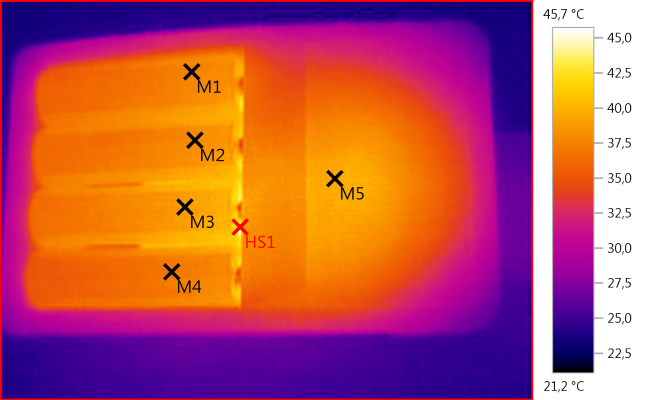
M1: 37,6°C, M2: 38,2°C, M3: 38,9°C, M4: 36,9°C, M5: 39,7°C, HS1: 45,7°C
The charger do warm the batteries, even with the low charge current, i.e. the heat is from the charger.
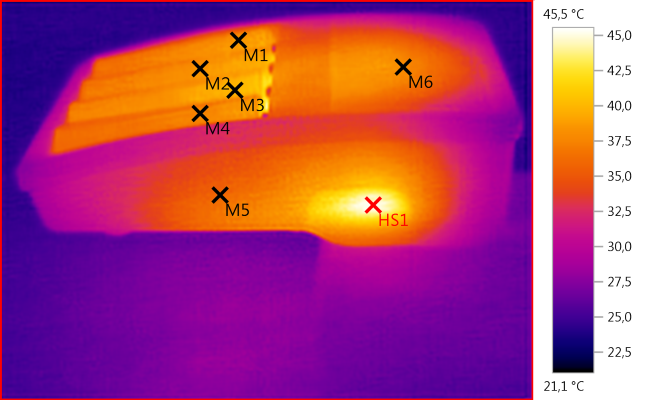
M1: 38,5°C, M2: 38,4°C, M3: 40,1°C, M4: 37,8°C, M5: 35,8°C, M6: 38,0°C, HS1: 45,5°C

M1: 47,3°C, M2: 49,9°C, M3: 50,4°C, M4: 46,6°C, M5: 41,7°C, HS1: 54,7°C
When the charging is finished the charger will cook the batteries for a couple of hours.

The charger is very fast to start.

I wonder why it uses pulses, when it does not use the voltage for anything and the charge circuit is not shared between the two banks.
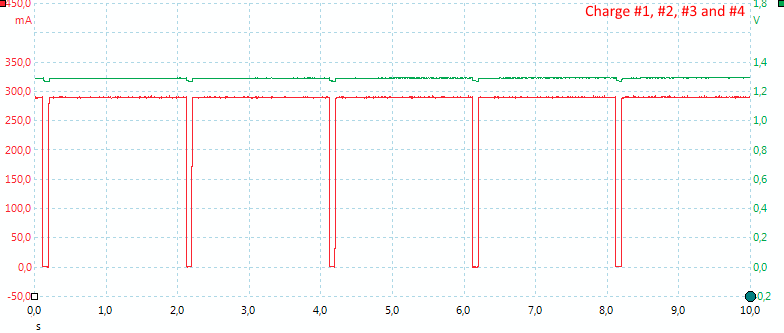
Adding some batteries to 3&4 will reduce the current slightly (Measuring is still on #1).
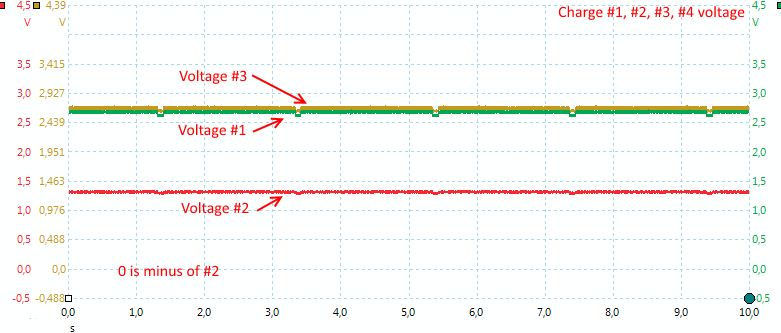
Tracking 3 voltages, the minus of #2 and #4 is the lowest voltage.
The charger has two charging circuits, one for 1&2 and one for 3&4.
Note: I changed the scale on #3 slightly or it would be hidden behing #1.
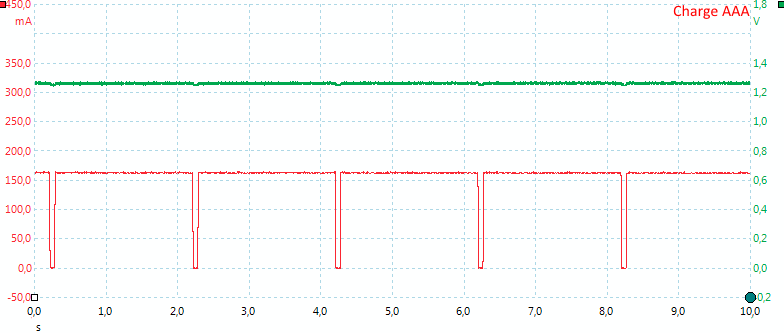
The current is reduced when charging AAA cells.
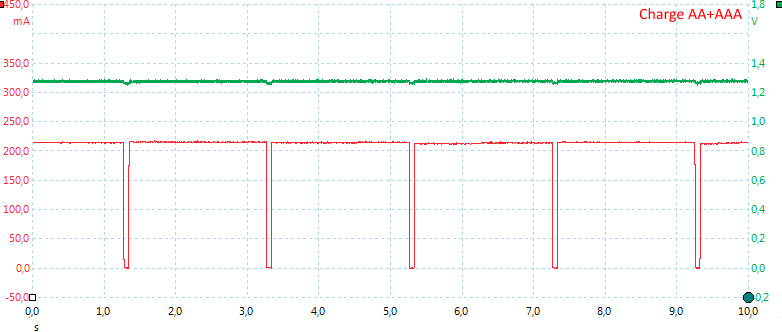
Mixing a AA and AAA cell in the same bank will give a current in between. It looks like the AAA slots just add a resistor.
Testing the mains transformer with 2500 volt and 5000 volt between mains and low volt side, did not show any safety problems.
Conclusion
I do not like this type of termination on chargers because it cook batteries, especially if you try to charge partial empty batteries. Having the batteries in series is usual a bad thing, but with timer termination it does not matter.
If you want to get a long life from LSD (Low self discharge) cells, do not use this charger, with older NiMH cells it is more acceptable, but still not good.
Notes
Here is an explanation on how I did the above charge curves: How do I test a charger
















%201+2.png)
%203+4.png)
%201+2.png)
%201+2.png)
.png)








